
|
You entered: terrain
 Quadrantids over the Great Wall
Quadrantids over the Great Wall
2.01.2020
Named for a forgotten constellation, the Quadrantid Meteor Shower is an annual event for planet Earth's northern hemisphere skygazers The shower's radiant on the sky lies within the old, astronomically obsolete constellation Quadrans Muralis. That location is not far from the Big Dipper, at the boundaries of the modern constellations Bootes and Draco.
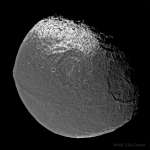 APOD: 2023 February 26 Б Saturns Iapetus: Moon with a Strange Surface
APOD: 2023 February 26 Б Saturns Iapetus: Moon with a Strange Surface
25.02.2023
What would make a moon look like a walnut? A strange ridge that circles Saturn's moon Iapetus's equator, visible near the bottom of the featured image, makes it appear similar to a popular edible nut.
28.01.2008
What does Mars look like from here? Last September, before hiking across rugged and slippery terrain to reach its winter hibernation point, the robotic Spirit rover climbed a small plateau known as Home Plate and captured the spectacular vista pictured above.
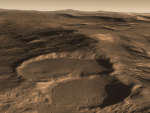 Radar Indicates Buried Glaciers on Mars
Radar Indicates Buried Glaciers on Mars
23.11.2008
What created this unusual terrain on Mars? The floors of several mid-latitude craters in Hellas Basin on Mars appear unusually grooved, flat, and shallow. New radar images from the Mars Reconnaissance Orbiter bolster an exciting hypothesis: huge glaciers of buried ice.
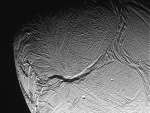 An Enceladus Tiger Stripe from Cassini
An Enceladus Tiger Stripe from Cassini
14.10.2008
What creates the unusual tiger stripes on Saturn's moon Enceladus? No one is sure. To help find out, scientists programmed the robotic Cassini spacecraft to dive right past the plume-spewing moon last week.
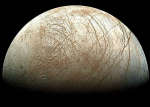 Gibbous Europa
Gibbous Europa
15.12.2013
Although the phase of this moon might appear familiar, the moon itself might not. In fact, this gibbous phase shows part of Jupiter's moon Europa. The robot spacecraft Galileo captured this image mosaic during its mission orbiting Jupiter from 1995 - 2003.
 Help Map The Moon
Help Map The Moon
11.09.1998
You can help map the Moon. Early tomorrow morning (Saturday, September 12) the Moon will occult, or pass in front of, the bright star Aldebaran as viewed from some Southern and Eastern areas of the U.S. as well as regions in the Caribbean Sea, Nova Scotia, Newfoundland, Mexico, and Central America.
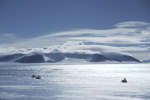 APOD: 2011 December 11 Searching for Meteorites in Antarctica
APOD: 2011 December 11 Searching for Meteorites in Antarctica
11.12.2011
Where is the best place on Earth to find meteorites? Although meteors fall all over the world, they usually just sink to the bottom of an ocean, are buried by shifting terrain, or are easily confused with terrestrial rocks.
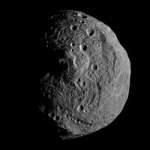 Virtual Flight Over Asteroid Vesta
Virtual Flight Over Asteroid Vesta
14.05.2012
What would it be like to fly over the asteroid Vesta? Animators from the German Aerospace Center recently took actual images and height data from NASA's Dawn mission currently visiting Vesta to generate such a virtual movie.
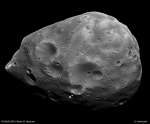 Phobos from Mars Express
Phobos from Mars Express
16.03.2010
Why is this small object orbiting Mars? The origin of Phobos, the larger of the two moons orbiting Mars, remains unknown. Phobos and Deimos appear very similar to C-type asteroids, yet gravitationally capturing such asteroids, circularizing their orbits, and dragging them into Mars' equatorial plane seems unlikely.
|
January February March April May June July |
|||||||||||||||||||||||||||||||||||||||||||||||||